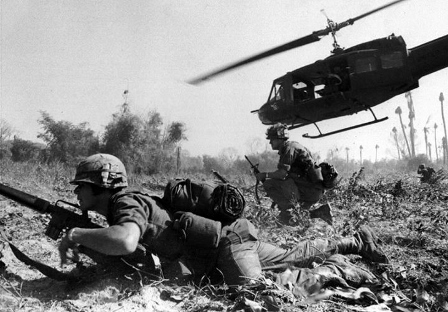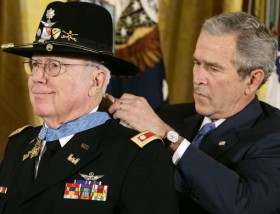Intermarkets' Privacy Policy
Donate to Ace of Spades HQ!
aceofspadeshq at gee mail.com
Buck:
buck.throckmorton at protonmail.com
CBD:
cbd at cutjibnewsletter.com
joe mannix:
mannix2024 at proton.me
MisHum:
petmorons at gee mail.com
J.J. Sefton:
sefton at cutjibnewsletter.com
Antifa-Style Pro-Palestinian Terrorist Group Arrested, Stopped from Planned New Years Even Attacks in LA
House Report: DC Police Chief Demanded Cops Falisify Crime Records to Cook the Stats "By Any Means Necessary"
Charles Grassley: New Evidence Proves Obama Stopped FBI Agents from Investigating the Clinton Foundation
Rob Reiner's Mentally-Ill Son Arrested for Double Murder, Held on $4 Million Bail
THE MORNING RANT: “Financialization of All the Things” is Parasitism, not Capitalism
Mid-Morning Art Thread
The Morning Report — 12/15/25
Daily Tech News 15 December 2025
Sunday Overnight Open Thread - December 14, 2025 [Doof]
Jim Sunk New Dawn 2025
Jewells45 2025
Bandersnatch 2024
GnuBreed 2024
Captain Hate 2023
moon_over_vermont 2023
westminsterdogshow 2023
Ann Wilson(Empire1) 2022
Dave In Texas 2022
Jesse in D.C. 2022
OregonMuse 2022
redc1c4 2021
Tami 2021
Chavez the Hugo 2020
Ibguy 2020
Rickl 2019
Joffen 2014
maildrop62 at proton dot me
TBD
The Battle of Ia Drang
It started yesterday 49 years ago in the Ia Drang. A four day fight, the first one between the newly trained 1st Cav (11th Air Assault Division (Test) and 2 Regiments of NVA regulars. 1/7 and 2/7, a thousand men strong planted themselves with UH-1s into two thousand of their enemy in the Ia Drang Valley.
Air assault.
This fight was chronicled in Joe Galloway and Lt. Col. Hal Moore's book We Were Soldiers Once and Young

The battle was called "inconclusive".
There are no inconclusive battles to the men that fought them.
One of the heroes of that fight was awarded his rightly earned recognition for heroism and courage above and beyond the call of duty 45 years after this battle. On April 15, 2010 February 26, 2007 (thanks Andy) Lt. Col Bruce P. Crandall (ret) received the Medal of Honor.
He served with A Company, 229th Assault Helicopter Battalion, 1st Cavalry Division (Airmobile). His citation is below the fold.
For conspicuous gallantry and intrepidity at the risk of his life above and beyond the call of duty:
Major Bruce P. Crandall distinguished himself by extraordinary heroism as a Flight Commander in the Republic of Vietnam, while serving with Company A, 229th Assault Helicopter Battalion, 1st Cavalry Division (Airmobile). On 14 November 1965, his flight of sixteen helicopters was lifting troops for a search and destroy mission from Plei Me, Vietnam, to Landing Zone X-Ray in the la Drang Valley. On the fourth troop lift, the airlift began to take enemy fire, and by the time the aircraft had refueled and returned for the next troop lift, the enemy had Landing Zone X-Ray targeted. As Major Crandall and the first eight helicopters landed to discharge troops on his fifth troop lift, his unarmed helicopter came under such intense enemy fire that the ground commander ordered the second flight of eight aircraft to abort their mission. As Major Crandall flew back to Plei Me, his base of operations, he determined that the ground commander of the besieged infantry batallion desperately needed more ammunition. Major Crandall then decided to adjust his base of operations to Artillery Firebase Falcon in order to shorten the flight distance to deliver ammunition and evacuate wounded soldiers. While medical evacuation was not his mission, he immediately sought volunteers and with complete disregard for his own personal safety, led the two aircraft to Landing Zone X-Ray. Despite the fact that the landing zone was still under relentless enemy fire, Major Crandall landed and proceeded to supervise the loading of seriously wounded soldiers aboard his aircraft. Major Crandall's voluntary decision to land under the most extreme fire instilled in the other pilots the will and spirit to continue to land their own aircraft, and in the ground forces the realization that they would be resupplied and that friendly wounded would be promptly evacuated. This greatly enhanced morale and the will to fight at a critical time. After his first medical evacuation, Major Crandall continued to fly into and out of the landing zone throughout the day and into the evening. That day he completed a total of 22 flights, most under intense enemy fire, retiring from the battlefield only after all possible service had been rendered to the Infantry battalion. His actions provided critical resupply of ammunition and evacuation of the wounded. Major Crandall's daring acts of bravery and courage in the face of an overwhelming and determined enemy are in keeping with the highest traditions of the military service and reflect great credit upon himself, his unit, and the United States Army.

Skip : "I would bet just like Europeans 'Right Wing' means ..."
weft cut loop[/i][/b] [/s]: "[i]Explain to me why the Californianx should be sa ..."
toby928(c): "[i]Make being at home easy and comfortable and mak ..."
Comrade Flounder, Disinformation Demon : "He must be talking about the KKK - the Kangaroo Kl ..."
thug dolphin: "Poorly written comic book hero. Got the excessive ..."
Semi-Literate Thug: " 271 The best response to a terrorist group was t ..."
...: "As I said last week it's well past time for Trump ..."
M. Gaga: "Makes me think of the cells we don't know of that ..."
L - No nic, another fine day: "Eh, they were loud with their bullhorns and out th ..."
Paco : "Meanwhile, Australian PM Anthony Albanese, in the ..."
toby928(c): "Welcome to SuperMax, turtles. ..."
Antifa-Style Pro-Palestinian Terrorist Group Arrested, Stopped from Planned New Years Even Attacks in LA
House Report: DC Police Chief Demanded Cops Falisify Crime Records to Cook the Stats "By Any Means Necessary"
Charles Grassley: New Evidence Proves Obama Stopped FBI Agents from Investigating the Clinton Foundation
Rob Reiner's Mentally-Ill Son Arrested for Double Murder, Held on $4 Million Bail
THE MORNING RANT: “Financialization of All the Things” is Parasitism, not Capitalism
Mid-Morning Art Thread
The Morning Report — 12/15/25
Daily Tech News 15 December 2025
Sunday Overnight Open Thread - December 14, 2025 [Doof]
Paul Anka Haiku Contest Announcement
Integrity SAT's: Entrance Exam for Paul Anka's Band
AllahPundit's Paul Anka 45's Collection
AnkaPundit: Paul Anka Takes Over the Site for a Weekend (Continues through to Monday's postings)
George Bush Slices Don Rumsfeld Like an F*ckin' Hammer
Democratic Forays into Erotica
New Shows On Gore's DNC/MTV Network
Nicknames for Potatoes, By People Who Really Hate Potatoes
Star Wars Euphemisms for Self-Abuse
Signs You're at an Iraqi "Wedding Party"
Signs Your Clown Has Gone Bad
Signs That You, Geroge Michael, Should Probably Just Give It Up
Signs of Hip-Hop Influence on John Kerry
NYT Headlines Spinning Bush's Jobs Boom
Things People Are More Likely to Say Than "Did You Hear What Al Franken Said Yesterday?"
Signs that Paul Krugman Has Lost His Frickin' Mind
All-Time Best NBA Players, According to Senator Robert Byrd
Other Bad Things About the Jews, According to the Koran
Signs That David Letterman Just Doesn't Care Anymore
Examples of Bob Kerrey's Insufferable Racial Jackassery
Signs Andy Rooney Is Going Senile
Other Judgments Dick Clarke Made About Condi Rice Based on Her Appearance
Collective Names for Groups of People
John Kerry's Other Vietnam Super-Pets
Cool Things About the XM8 Assault Rifle
Media-Approved Facts About the Democrat Spy
Changes to Make Christianity More "Inclusive"
Secret John Kerry Senatorial Accomplishments
John Edwards Campaign Excuses
John Kerry Pick-Up Lines
Changes Liberal Senator George Michell Will Make at Disney
Torments in Dog-Hell
The Ace of Spades HQ Sex-for-Money Skankathon
A D&D Guide to the Democratic Candidates
Margaret Cho: Just Not Funny
More Margaret Cho Abuse
Margaret Cho: Still Not Funny
Iraqi Prisoner Claims He Was Raped... By Woman
Wonkette Announces "Morning Zoo" Format
John Kerry's "Plan" Causes Surrender of Moqtada al-Sadr's Militia
World Muslim Leaders Apologize for Nick Berg's Beheading
Michael Moore Goes on Lunchtime Manhattan Death-Spree
Milestone: Oliver Willis Posts 400th "Fake News Article" Referencing Britney Spears
Liberal Economists Rue a "New Decade of Greed"
Artificial Insouciance: Maureen Dowd's Word Processor Revolts Against Her Numbing Imbecility
Intelligence Officials Eye Blogs for Tips
They Done Found Us Out, Cletus: Intrepid Internet Detective Figures Out Our Master Plan
Shock: Josh Marshall Almost Mentions Sarin Discovery in Iraq
Leather-Clad Biker Freaks Terrorize Australian Town
When Clinton Was President, Torture Was Cool
What Wonkette Means When She Explains What Tina Brown Means
Wonkette's Stand-Up Act
Wankette HQ Gay-Rumors Du Jour
Here's What's Bugging Me: Goose and Slider
My Own Micah Wright Style Confession of Dishonesty
Outraged "Conservatives" React to the FMA
An On-Line Impression of Dennis Miller Having Sex with a Kodiak Bear
The Story the Rightwing Media Refuses to Report!
Our Lunch with David "Glengarry Glen Ross" Mamet
The House of Love: Paul Krugman
A Michael Moore Mystery (TM)
The Dowd-O-Matic!
Liberal Consistency and Other Myths
Kepler's Laws of Liberal Media Bias
John Kerry-- The Splunge! Candidate
"Divisive" Politics & "Attacks on Patriotism" (very long)
The Donkey ("The Raven" parody)

